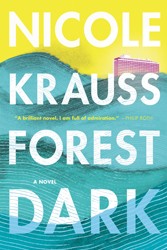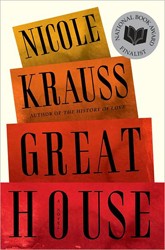You might need a score card for a while to track who’s talking and in which family narrative because Nicole Krauss, a talented and inventive fiction writer, creates eccentric, questing, sensitive characters who tell their unrelated stories in alternating chapters, but whose stylistic mannerisms eventually identify who they are. The shifting points of view are intended to sustain curiosity about how separate characters who have nothing to do with one another will finally be brought together. This feat managed by the dogged persistence of the oddball child. The History of Love features two such youngsters — Alma, a young adolescent who knows she is named for a real-life character who prompted a bestselling book called “The History of Love,” the other, her younger brother Bird who is convinced he is a lamed vovnik (one of the 36 people the world depends on — he may even be the Messiah). At the center of the story within the story is a shrewd, damaged old Jewish refugee, Leo Gursky, who loved an Alma back in Poland. The author of this deeply moving novel plays with the way accident and coincidence, dreams and delusions, define and comfort those who have loved and lost.

The History of Love
Discussion Questions
Courtesy of W.W. Norton
1. Leo Gursky and Alma Singer make an unlikely pair, but what they share in common ultimately brings them together. What are the similarities between these two characters?
2. Leo fears becoming invisible. How does fiction writing prove a balm for his anxiety?
3. Explore the theme of authenticity throughout the narrative. Who’s real and who’s a fraud?
4. Despite his preoccupation with his approaching death, Leo has a spirit that is indefatigably comic. Describe the interplay of tragedy and comedy in The History of Love.
5. What distinguishes parental love from romantic love in the novel?
6. Why is it so important to Alma that Bird act normal? How normal is Alma?
7. When Alma meets Leo, she calls him the “oldest man in the world.” Does his voice sound so ancient?
8. Uncle Julian tells Alma, “Wittgenstein once wrote that when the eye sees something beautiful, the hand wants to draw it.” How does this philosophical take on the artistic process relate to the impulse to write in The History of Love?
9. Many different narrators contribute to the story of The History of Love. What makes each of their voices unique? How does Krauss seam them together to make a coherent novel?
10. Survival requires different tactics in different environments. Aside from Alma’s wilderness guidelines, what measures do the characters in the novel adopt to carry on?
11. Most all of the characters in the novel are writers – from Isaac Moritz to Bird Singer. Alma’s mother is somewhat exceptional, as she works as a translator. Yet she is not the only character to transform others’ words for her creative practice. What are the similarities and differences between an author and a translator?
12. What are the benefits of friendship in the novel? Why might Alma feel more comfortable remaining Misha’s friend rather than becoming his girlfriend?
13. The fame and adulation Isaac Moritz earns for his novels represent the rewards many writers hope for, while Leo, an unwitting ghostwriter, remains unrecognized for his work. What role does validation play in the many acts of writing in The History of Love?
14. Leo decides to model nude for an art class in order to leave an imprint of his existence. He writes to preserve the memories of his love for Alma Mereminski. Yet drawings and novels are never faithful renditions of the truth. Do you recognize a process of erasure in the stories he tells us?
15. Why might Krauss have given her novel the title The History of Love, the same as that of the fictional book around which her narrative centers?

Help support the Jewish Book Council.


